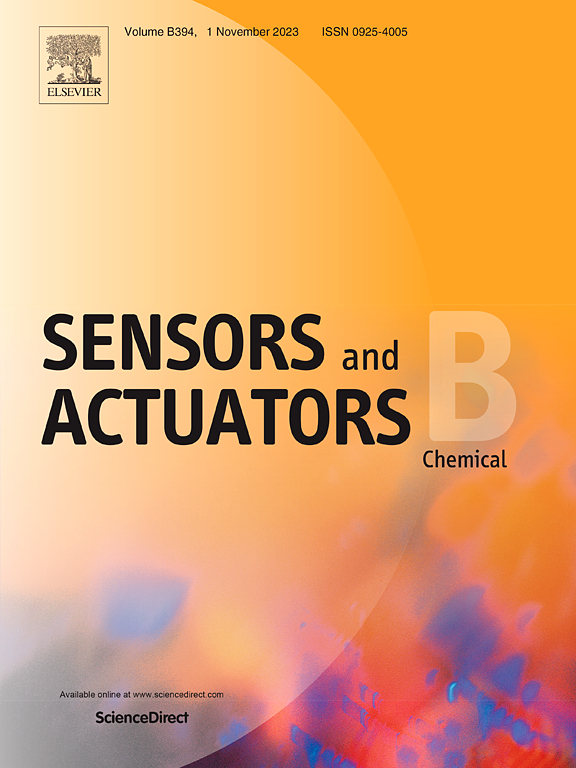CN- as a cofactor enhancing the laccase-like activity of copper porphyrin metal-organic frameworks facilitates the sensitive cyanide detection
IF 8
1区 化学
Q1 CHEMISTRY, ANALYTICAL
引用次数: 0
Abstract
Excessive presence of cyanide in various environmental and biofluids poses a significant threat due to its highly toxic nature and potential threat to living organisms. Nevertheless, a multitude of current techniques encounter difficulties in sensitivity and selectivity issues. Inspired by the Cu-N active sites in natural laccase, we propose novel copper-based porphyrin metal-organic frameworks (Cu-TCPP) nanosheets that act as potent laccase mimics, which has been firstly used for the ultra-sensitive cyanide detection. The electron-rich nature, strong reductivity, and Cu-ion coordination ability of cyanide ions (CN-) specifically enhances the mimic activity of Cu-TCPP. The incorporation of CN- also increases the Cu+/Cu2+ ratio and oxygen vacancies, accelerates the interaction between Cu-TCPP and its substrates, enhancing the electron transfer and improving oxygen activation efficiency and catalytic cycling. Notably, the regulatory effect of CN- is concentration-dependent, enabling sensitive CN- detection. To address potential interferences from the inherent color and UV absorption of the nanomaterials, a post-reaction centrifugation technique has been introduced, allowing for accurate measurement with improved resolution and sensitivity. The innovative strategy of utilizing a cofactor to regulate the laccase mimics activity provides fresh insights into the design of advanced nanozymes and offers an alternative method for detecting cofactors, facilitating broader applications in various fields.
CN-作为辅助因子增强铜卟啉金属-有机骨架漆酶样活性有助于氰化物的灵敏检测
由于氰化物的剧毒性质和对生物体的潜在威胁,在各种环境和生物流体中过量存在氰化物构成重大威胁。然而,目前的许多技术在灵敏度和选择性问题上遇到困难。受天然漆酶中Cu-N活性位点的启发,我们提出了一种新型的铜基卟啉金属有机框架(Cu-TCPP)纳米片,作为有效的漆酶模拟物,首次用于超灵敏氰化物检测。氰化物离子(CN-)的富电子性质、强还原性和cu离子配位能力特别增强了Cu-TCPP的模拟活性。CN-的掺入也增加了Cu+/Cu2+的比率和氧空位,加速了Cu- tcpp与底物的相互作用,增强了电子传递,提高了氧活化效率和催化循环。值得注意的是,CN-的调节作用是浓度依赖的,可以实现敏感的CN-检测。为了解决纳米材料固有颜色和紫外线吸收的潜在干扰,引入了反应后离心技术,允许以提高分辨率和灵敏度进行精确测量。利用辅助因子调节漆酶模拟物活性的创新策略为高级纳米酶的设计提供了新的见解,并为检测辅助因子提供了一种替代方法,促进了在各个领域的更广泛应用。
本文章由计算机程序翻译,如有差异,请以英文原文为准。
求助全文
约1分钟内获得全文
求助全文
来源期刊

Sensors and Actuators B: Chemical
工程技术-电化学
CiteScore
14.60
自引率
11.90%
发文量
1776
审稿时长
3.2 months
期刊介绍:
Sensors & Actuators, B: Chemical is an international journal focused on the research and development of chemical transducers. It covers chemical sensors and biosensors, chemical actuators, and analytical microsystems. The journal is interdisciplinary, aiming to publish original works showcasing substantial advancements beyond the current state of the art in these fields, with practical applicability to solving meaningful analytical problems. Review articles are accepted by invitation from an Editor of the journal.
 求助内容:
求助内容: 应助结果提醒方式:
应助结果提醒方式:


